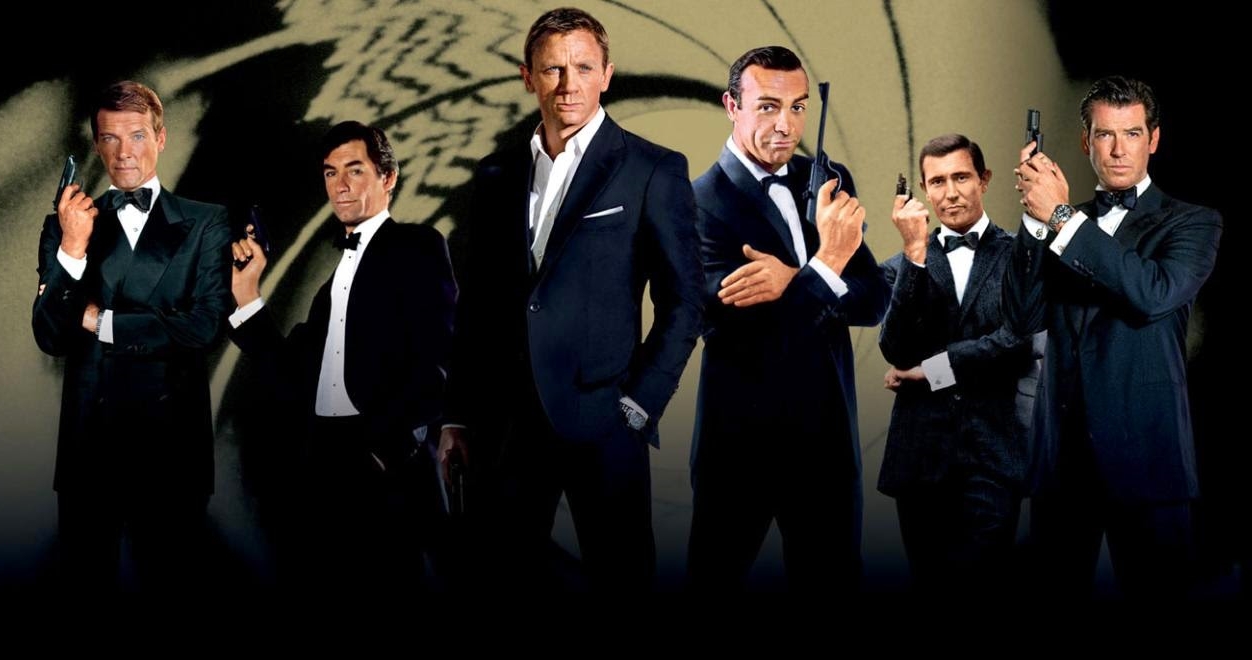
 The top ten 007 movies
The top ten 007 movies
Other | Monday 8th June 2015 | Nathan
With Spectre, the 24th edition of the Bond film series coming to cinemas worldwide this November, we decided to compose a list of the top ten best 007 movies (in order of date).
Dr. No (1962)
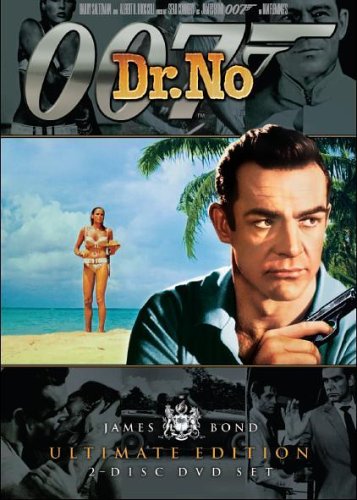
When you look at the success of the first 007 movie, it’s remarkable considering its budget. Note that the film industry still considered a budget of $1.1 million low in the 60’s.
Dr. No introduced viewers to the main character for the first time. He was a charming, smartly dressed and handsome young man named James Bond. Furthermore, he was an MI6 Agent, codename: 007. Although this version contrasted with the one Bond creator Ian Fleming described in his novels, critics still praised the slick and suave variant played by Sean Connery. Women worldwide perceived James Bond as a sex symbol and men worldwide praised him for his magnetism towards women – not your average 5s or 6s, but 9s and 10s! In all, critics loved the two sides to Bond - gentleman and exceptional arsekicker!
Ultimately, Dr. No was a huge success, earning six times its budget.
From Russia With Love (1963)
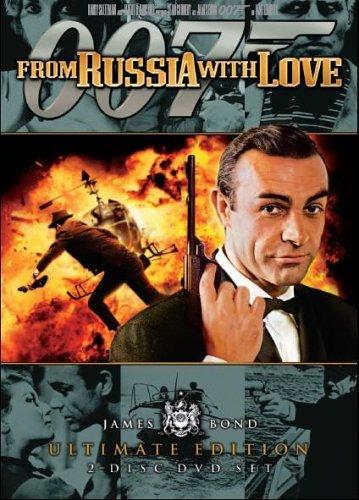
In this instalment, Sean Connery picked up where he left off from Dr. No with another impressive portrayal as James Bond. We learn more about Bond as a character. Although still generally charming, he’s not entirely a gentleman. We are reminded that he’s foremost an agent and will complete a mission by any means necessary, even if it means going toe to toe with a woman, as seen during his violent encounter with SPRECTRE COO Rosa Klebb, towards the end of the movie.
Unlike Dr. No’s Honey Ryder who was nothing more than eye candy, the new Bond Girl was an important part of the storyline. Tatiana Romanov played the role of femme fatale and simultaneously was a pawn in SPECTRE’s ultimate plan. Her SPECTRE superior, Rosa Klebb, ordered the Russian bombshell to lure Bond into Istanbul and then into bed with her, unaware of SPECRE’s, real intention, which was using her to expose Bond and MI6 as an incompetent agency.
Robert Shaw deserves praise for his role as Donald ‘Red’ Grant, a main antagonist in the film. The SPECTRE henchman is cunning and relentless, a dangerous combination, which he revealed throughout the motion picture, going through extreme lengths to eliminate James Bond. For example, he disguised himself as MI6 agent Norman Nash in order to get closer to the British secret agent, leading to their classic train fight.
Goldfinger (1964)

This was the film that broke boundaries, becoming the first of the 007 franchise to win an Oscar.
Goldfinger capitalised on one of the franchise's key elements that contributed to its success - humour. The motion picture contains more slapstick comedy, wittier remarks, tongue-in-cheek jibes and ridiculing the antagonists. Even the great chemistry between James Bond and Auric Goldfinger is comical.
Unlike the previous 007’s, the storyline focuses less on the main character and instead centres on the prime antagonist Auric Goldfinger, so much so that virtually every relevant character has a connection to the psychopath. Even the hit theme song 'Goldfinger' by Dame Shirley Bassey was in his honour.
Gert Fröbe’s performance as Goldfinger is outstanding, outshining Sean Connery in the same way that Heath Ledger as the Joker outshone Christian Bale as Batman in the Dark Knight.
Auric’s obsession with gold is beyond the norm to the extent that even his name, Auric, derives from the chemical symbol Au, the symbol for gold.
Director Guy Hamilton originally chose to cast the legendary Orson Welles as the notorious Auric Goldfinger, but the megastar refused the role, unsatisfied with the amount of money offered to play the part. This turned out to be a blessing. With all due respect to Welles (who’s a great actor in his own right) he may not have portrayed Goldfinger as impressively as Gert Fröbe. Ultimately, Fröbe’s success as the psychotic businessman left a lasting legacy in film history. The American Film Institute list Auric Goldfinger among the 100 greatest villains of all time.
Thunderball (1965)
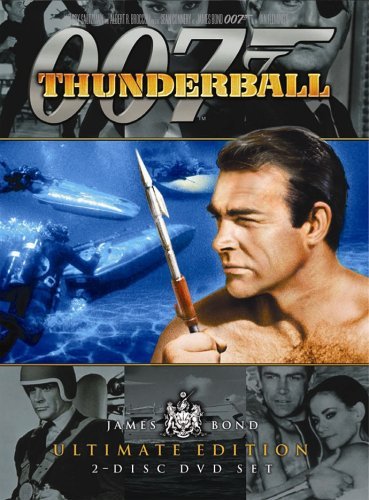
Thunderball’s filmmakers took advantage of a bigger budget, creating a classic.
Thunderball contained more action than the previous 007 films and as a result increased Bond’s reputation as a top class agent. Another character whose stock rose was MI6’s veteran engineer Q, who once again proved his credibility as an innovator, providing James with new weapons and gadgets such as a modified scuba tank, which travelled very quickly under water despite its large mass. It was also equipped with a missile launcher.
While Goldfinger was the film that launched the success of the Aston Martin, Thunderball took its value to a higher level - the film showcased the Aston Martin DB5’s ability to travel underwater and serve as a weapon, launching water cannons towards unfortunate targets.
Actress Luciana Paluzzi shined as the central villainess, Fiona Volpe. The SPECTRE agent was a bona fide femme fatale. Unlike Tatiana Romanov in Dr.No, Fiona doesn’t become emotionally attached to Bond, which is a testament to her skill as an agent and loyalty towards her organisation. Fiona Volpe is the most significant character in Thunderball because she exposed James Bond’s Achilles heel – his adoration for attractive women. Fiona effortlessly lured him into bed, leading to his capture by SPECTRE agents.
Further into the film, a fight scene between Bond and SPECTRE goons leads into a fancy outdoor party. The British agent seizes the opportunity to blend into the crowd, dancing with a random woman. Having identified James, Fiona cuts in and slow dances with him. In time, Bond sees a firearm aimed towards him, prompting him to swiftly shift Fiona into the bullet's direction resulting in her demise. Using Fiona Volpe as a human shield signified that Bond had overcome his weakness, therefore restoring his credibility as a top-notch secret agent.
Thunderball is currently the second highest grossing 007 title after Skyfall, with over an estimated $1 billion in revenue.
On Her Majesty’s Secret Service (1969)

The sixth instalment of 007 features Australian actor George Lazenby as the new James Bond, taking over from an ageing Sean Connery.
Following Connery’s impressive resume, it was only natural that critics had their doubts about Lazenby taking on a character that the Scotsman had moulded into a legend. George Lazenby however, announced that he would only star in one 007. Whether or not he sincerely meant that, it was a smart move. With hardly any pressure from critics, he performed solidly, looking very comfortable in his lead role.
While not necessarily the best of among the 007 series, On Her Majesty’s Secret Service is the most significant because it was the first film to reveal a different side to James Bond. This was a mature version that contrasted with the comical character portrayed by Sean Connery. This Bond had a ‘more action, less play’ mindset, which drew in a new audience. The film also reveals an affectionate side to James. We learn he’s more than just a womaniser. The impossible occurs as Bond settles down and marries Bond girl, Countess Tracy di Vincenzo.
The gripping ending tops off a great movie. The love of Bond’s life dies – murdered by his archenemy, Ernest Blofeld, leader of SPECTRE. The dramatic conclusion evoked mixed emotions from viewers; sadness, anger and shock being the most common. Needless to say, millions of fans were eager for the next 007 thriller to arrive, and the most popular question following the tragic ending was ‘What would James Bond’s mindset be like following his tragic loss?’
As a testament to George Lazenby’s remarkable performance, he received a nomination for the New Star of the Year – Actor award at the 27th Golden Globes Awards. His success as a serious Bond marked the redundancy of slapstick comedy in 007 titles to follow.
The Living Daylights (1987)

While critics generally regard Timothy Dalton as the least favourite actor to star as James Bond, he deserves praise for adding more depth to the British secret agent. Dalton is as solemn as Lazenby, with even less cheeky catchphrases. Dalton’s dark representation of agent 007 (at that time) bared the closest resemblance to the original Bond from Ian Fleming’s novels.
The Living Daylights added another unique aspect to the Bond girl, Kara Miloy (Maryam d’Abo). Although she’s attractive, she doesn’t have that sexual allure like the beauts before her. Kara represents the girl next door; a genuine, humble, down to earth and compassionate woman. From a professional standpoint, she’s a qualified cellist but clearly not suited as an assassin.
Fans took a liking to Kara Miloy due to her perception as the first ordinary Bond girl. She proved that glamour was not a compulsory quality to have in order for critics to like you.
License to Kill (1989)

License to Kill took the crown from Thunderball as the most action packed 007.
The 1989 classic kicks off with utter violence, with DEA agent Felix Leiter’s legs mauled by a pool of great white sharks. It just gets better as the film progresses; for instance the epic fight scene between Bond and Sanchez on a moving lorry, which progresses to the ground, where the MI6 agent eventually roasts the drug lord to a burnt crisp.
License to Kill also served as the platform for a certain, young and unestablished actor named Benicio Del Toro to showcase his potential, delivering what may be the film’s best quote. As Felix Leiter barks, “Where’s my wife?!”, henchmanDario (Del Toro) cheekily replies, “Gone on a nice honeymoooon!”, insinuating that he and a considerable number of Sanchez’ other goons have, let’s say ‘mistreated’, Leiter’s wife.
License to Kill continued the trend in evolving James Bond’s counterpart. If you couldn’t tell from her occupation as an ex-army pilot, Pam Bouvier (Carey Lovell) is a tomboy, the first of her kind to play the prestigious Bond girl. Pam Bouvier is undoubtedly the most distinctive Bond girl. She is the complete opposite of the characteristics associated with a Bond girl – from her short, slick hair, to her ‘all business’ approach to missions, to her competent fighting skills, which enabled her to hold her own against Sanchez’ goons.
Despite her distinctive qualities, Pam Bouvier is a femme fatale, but in contrast to Luciana Paluzzi, uses her seductiveness to mislead criminals. In the film, she disguises herself as a fan of televangelist Professor Joe Butcher, also an affiliate of drug lord Sanchez. Once in his private chamber she entices him, only to reveal a small handgun that she had wrapped around her right thigh. In summary, Pam proves that she’s smart, sexy and dangerous; the ultimate woman.
Although Timothy Dalton as 007 lacked the elegance of his predecessors, he had an abundance of charisma, which made him irresistible to women. Faced with a choice of two women, James Bond chooses tomboy Pam Bouvier over glamorous Lupe Lamora. This signifies that a seven with an interesting personality can be more desirable to a man than a ten with a bland personality.
GoldenEye (1995)

Pierce Brosnan, headlining as the spy in the famous black tuxedo, garnered positive reviews. He had a great look reminiscent of the elder Bonds, Sean Connery and Roger Moore.
GoldenEye stood out from the previous films because of its personal storyline. For the first time in the 007 series, the main antagonist is one of their own. Alec Trevelyan is a former MI6 agent, a 006, whom James once considered a close friend. GoldenEye sees James Bond experience his toughest challenge, both mentally and physically. Not only does James have to come to terms with the fact that Alec betrayed him, MI6, and his country but also he has to eliminate a highly skilled, former agent who knows him very well.
GoldenEye’s success inspired the Nintendo 64 hit of the same name, and is easily one of the greatest video games ever made!
Casino Royale (2006)

While the former actors to star as Agent 007 had unique aspects about their characters that differed from one another, Daniel Craig completely revolutionised James Bond.
English actor Daniel Craig became the shortest man to portray Bond at 5’10”, as well as being the first blonde 007. His features caused controversy, with many critics wondering whether director Martin Campbell had ‘lost his mind’ in selecting Craig for the role. Craig silenced his critics once Casino Royale hit cinemas worldwide. Contrary to the outpour of criticism, fans and critics praised his performance.
Casino Royale was the first film to provide insights into 007’s origins. This was a major part of his character, concealed for 44 years prior to Casino Royale’s release, and fans were understandably eager to get to know the man behind the legendary MI6 agent.
Casino Royale set a new series record, grossing over $167 million worldwide. It just goes to show how well critics appreciated the youthfulness that Daniel Craig added to the film, in addition to his ruthlessness, which had been absent since Dalton played Bond in License to Kill.
Skyfall (2012)
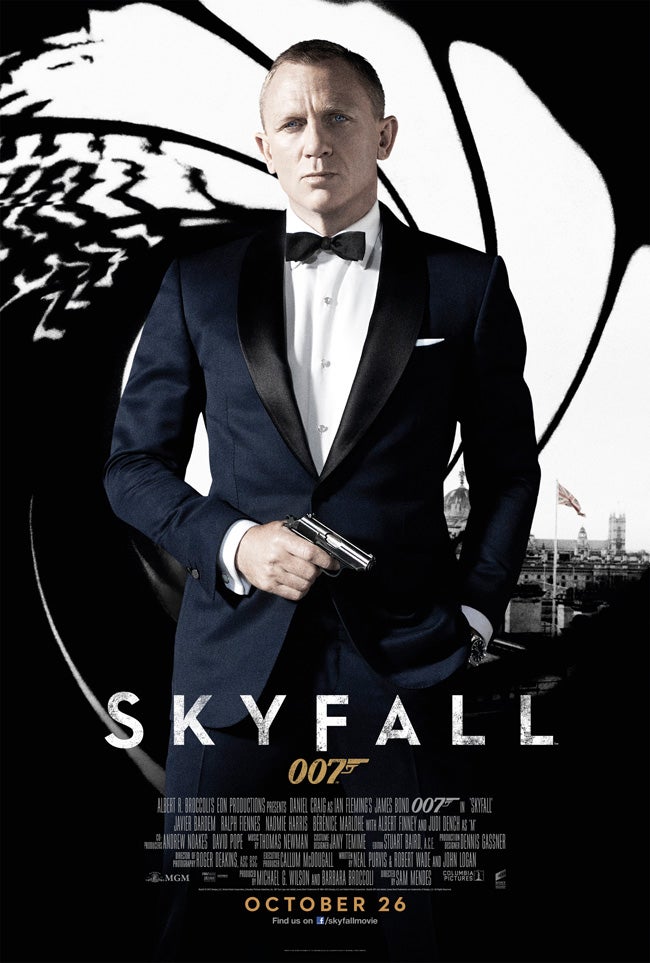
Skyfall emulates GoldenEye with a personal storyline. Additionally, for the first time since Goldfinger, Skyfall centres on someone other than James Bond. Focusing less on the prime protagonist had no effect on the quality of the storyline, as Skyfall was an enthralling movie. Making MI6 leader M the central character was a very smart move.
Skyfall follows the trend of numerous 007 titles as another unconventional addition to the series - it was the first to centre the storyline in England. Thinking about it, it’s ironic that it took half a century to do so considering the main characters and MI6 are based in the heart of London.
Amid the long list of villains since Dr. No, Raolu Silva is the first that had a legitimate incentive for targeting a member of MI6. In this thriller he goes to great lengths to destroy his former colleague M for betraying him. Skyfall also sees Bond fail a mission for the first time. There are dire consequences for his and Moneypenny’s failure to eliminate terrorist Patrice, who escapes with highly classified data containing details of undercover agents placed in terrorist organisations by member states of NATO. In result of Bond’s failed mission, top agencies (including MI6) faced exposure, prompting M to go into hiding.
Although it’s debatable whether Skyfall is actually the greatest 007 movie of all time, it’s undeniably the most successful. Not only is Skyfall the highest grossing film in UK history, it’s also ranked as the 17th highest grossing film of all time. In 2013, the motion picture solidified its success, winning two BAFTA’s, two Oscars, and two Grammys!
Can Spectre surpass Skyfall’s success?
With CBE Sam Mendes returning as director following the success of Skyfall, and two-time Oscar winner Christopher Waltz starring as the film's main antagonist, we can't wait to find out!
